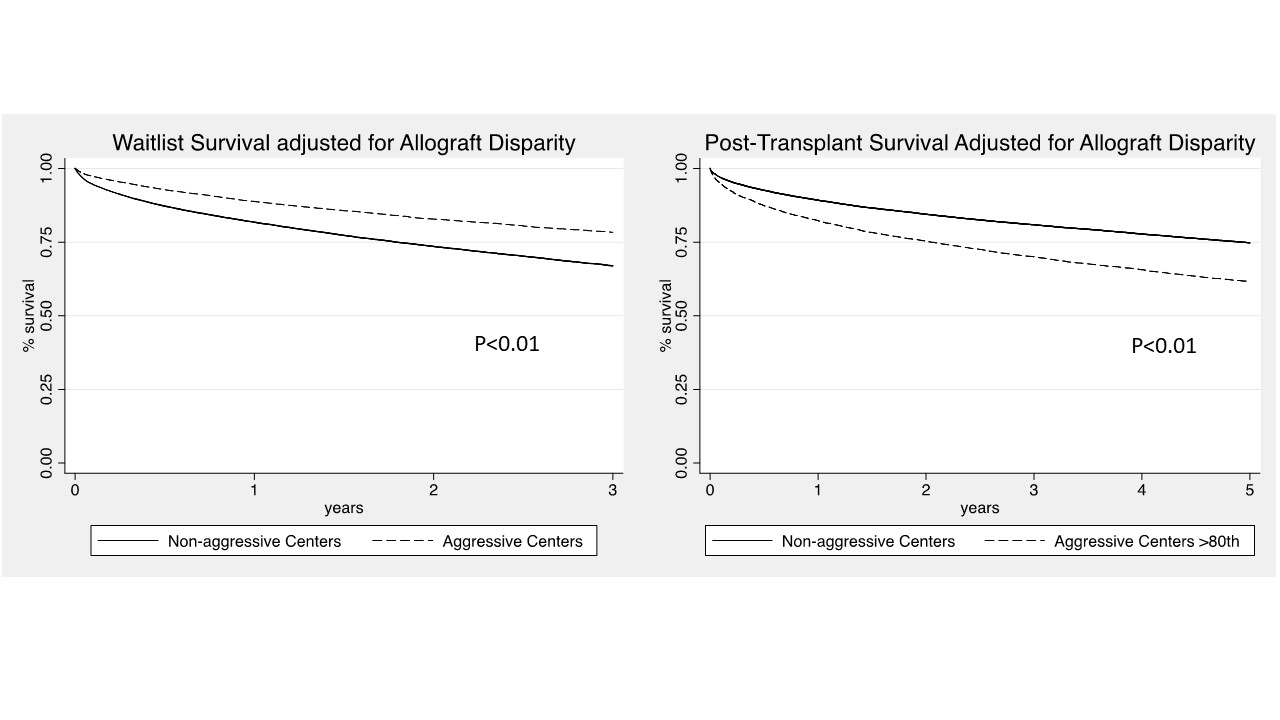Impact Of Aggressive Utilization Of Liver Allografts On Outcomes
Baylor College of Medicine, Houston, TX
Meeting: 2019 American Transplant Congress
Abstract number: C285
Keywords: Cadaveric organs, Graft acceptance, Lung transplantation, Outcome
Session Information
Session Name: Poster Session C: Liver: MELD, Allocation and Donor Issues (DCD/ECD)
Session Type: Poster Session
Date: Monday, June 3, 2019
Session Time: 6:00pm-7:00pm
 Presentation Time: 6:00pm-7:00pm
Presentation Time: 6:00pm-7:00pm
Location: Hall C & D
*Purpose: Many risk factors impact outcomes for liver transplantation, among them are factors that are particular to individual transplant centers or center-level factors. Our aim was to assess center-level risk factors for waitlist and posttransplant survival including a metric for the aggressive utilization of liver allografts (ratio of the number of marginal allografts transplanted to the total number of allografts transplanted in a transplant program).
*Methods: We studied a cohort of 148,361 candidates listed in the Organ Procurement and Transplantation Network for liver transplantation between 2002 and 2016 in 134 transplant centers. Among these 72,670 (49%) of originally listed candidates underwent transplantation. Our analysis of patient survivals on the waitlist using competing risk multivariable regression and after transplantation using univariate and multivariate Cox regression included a comprehensive list of center-level covariates. These included volumes of transplantation, experience, affiliation with a pediatric or thoracic transplant programs, aggressive utilization of donor allografts, and disparities in the geographic supply of liver allografts. To increase the comprehensive nature of the analysis, recipient and donor-level covariates were also included.
*Results: After adjusting for donor, recipient, and center-level factors, an aggressive phenotype for the utilization of liver allografts negatively impacted survival after liver transplantation HR 2.38 (95% CI 1.32-4.28) using a continuous metric. The aggressive phenotype had a positive impact on waitlist survival HR 0.24 (95% CI 0.19-0.31) and a negligible impact on intent-to-treat survival. Other center-level factors including: volume, experience, and affiliation with pediatric or thoracic transplant programs had no significant impact on waitlist or posttransplant outcomes. The geographic disparity in the supply and demand of liver allografts had an impact on waitlist survival.
*Conclusions: Aggressive phenotype for liver utilization negatively impacted survival after liver transplant in an adjusted analysis. Posttransplant risk adjustment models should incorporate a metric for the aggressive utilization of liver allografts. The aggressive phenotype had a positive impact on waitlist survival and serves as the justification for the aggressive utilization of allografts.
To cite this abstract in AMA style:
Rana A, Kueht M, Galvan N, Cotton R, O'Mahony C, Goss J. Impact Of Aggressive Utilization Of Liver Allografts On Outcomes [abstract]. Am J Transplant. 2019; 19 (suppl 3). https://atcmeetingabstracts.com/abstract/impact-of-aggressive-utilization-of-liver-allografts-on-outcomes/. Accessed July 2, 2025.« Back to 2019 American Transplant Congress

